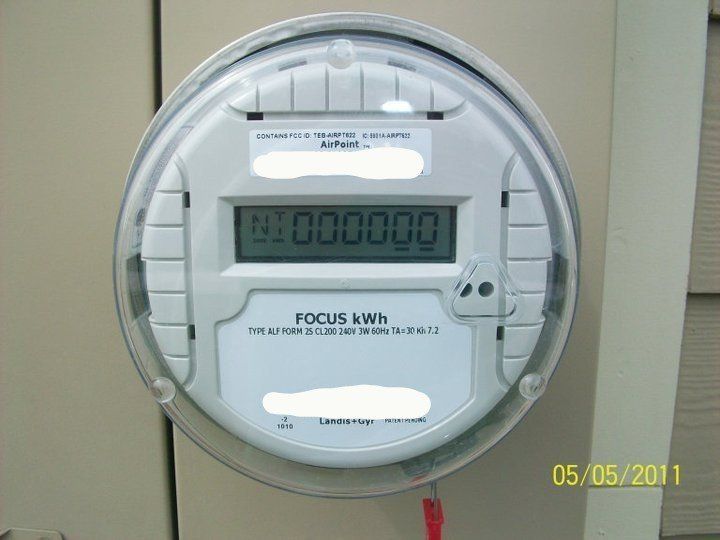Published Saturday March 1, 2014: Updated August 14, 2014
Net Metering Haters
Recently there has been opposition growing among various power companies across the country stating that net-metering customers who feed electricity back to the power grid are somehow causing additional burden to the electrical infrastructure.

This is now taking place at Rocky Mountain Power. While I am not one of their customers, (I am under the jurisdiction of Kaysville Power), I am concerned that smaller power companies will also follow suite.
Most customers who have solar panels are generating less than 100% of the electricity they need, so they will still buy electricity from the power company and ALL pay the standard utility connection fees already.
Many others realize the tremendous economics and synergy of having solar panels and driving an electric car. They stop buying gasoline but will still continue buying electricity (hopefully renewable energy) from Rocky Mountain power.
But the argument remains, and Rocky Mountain Power is making fantastic claims that net-metering customers are somehow burdening the power grid. How can the common home-owner know for certain? Why should we believe Rocky Mountain Power since they themselves don’t have a shred of data or scientific evidence backing up any of their claims?
Does Net Metering Burden the power grid?
I am John Loveless. I am an electrical engineer and as an engineer, I challenge Rocky Mountain Power to back up their claim with data and facts. Get your best technicians and Engineers, take some measurements, conduct some studies and show us the data proving that residential net-metering customers are causing additional burden to the power grid.
They can’t because it just isn't possible. But still, I challenge them to please PROVE ME WRONG!
Excess energy from solar panels on a residential home does not magically travel 10’s or 100’s of miles back through the infrastructure to the power plant. Per the laws of Physics, (particularly Ohm's law and Kirchhoff's circuit laws), it will only travel 10’s or 100’s of feet to the next closest load (customer) on the power grid. This isn’t magic but basic electronic principles, taught in high-school electronics classes.
Nearly all the excess energy generated by my home’s solar array is consumed by my neighbor’s homes, located on the same street as me and who share the same power transformer that I do. Almost none of this energy will ever make it as far as the local substation (300 yards from my home). It is all consumed immediately and any electrical fingerprint left behind by my home’s solar net-generated electricity is quickly attenuated until it is un-measurable and indistinguishable from the utility’s own fossil fueled electricity.
Residential net-metered energy is consumed locally, in the neighborhood, just like delicious food at a friendly neighborhood barbeque. –John Loveless
Other arguments for net-metering:
Since solar energy generated by homeowners is consumed locally in the neighborhood, there are no line losses from the energy having to travel 100's of miles from power plants. This increases the efficiency of the entire grid, saving the utility money.
Since homeowners are installing equipment out of their own pockets, the utility doesn't have to spend its own money (increasing costs to rate payers) to install additional power plants.
Electricity is a commodity and its price is based on supply and demand. During times when the power company's sources of electricity are reaching peak capacity, electricity on the open market is extremely expensive. During a period of very high demand, (like when it is really hot and sunny outside and everyone is running their air conditioner units, Above-peak capacity electricity that the power company buys, doesn't cost them 4 cents or 10 cents per kWh. Not even 20 or 30 cents per kWh but upwards of $100 per kWh. It is during these times that grid-tied, net-metered solar panels happen to make the most electricity and are selling back to the grid, not at $100 per kWh but for 10 cents, (or whatever the power company's outgoing rate for electricity is at that time).
So not only are net-metering customers not causing additional burden to the power grid, they are literally one of the power company's greatest assets, providing premium, renewable, above-peak-capacity energy at bargain basement prices to the power company.
Currently RMP net-metering customers supply only a tiny fraction of 1% of the total electrical energy.
Hawaii Electric, (which has the nation’s highest percentage of net-metering customers of any utility) is confident that it can run up to 30% peak PV capacity without running into grid stability problems.
Granted, large adoption of distributed, net-metered solar power is a new player on an old field. While there is potential for technological challenges, we can follow the lead of German utilities who in 2013, achieved a 61% peak renewable energy production using wind and solar alone.
In May 2014, German utilities again set a new peak record by generating 74% of its power from wind and solar energy. To the shock of the detractors, nothing blew up. Not even 74% was a burden to their power grid. Their grid is smart.
